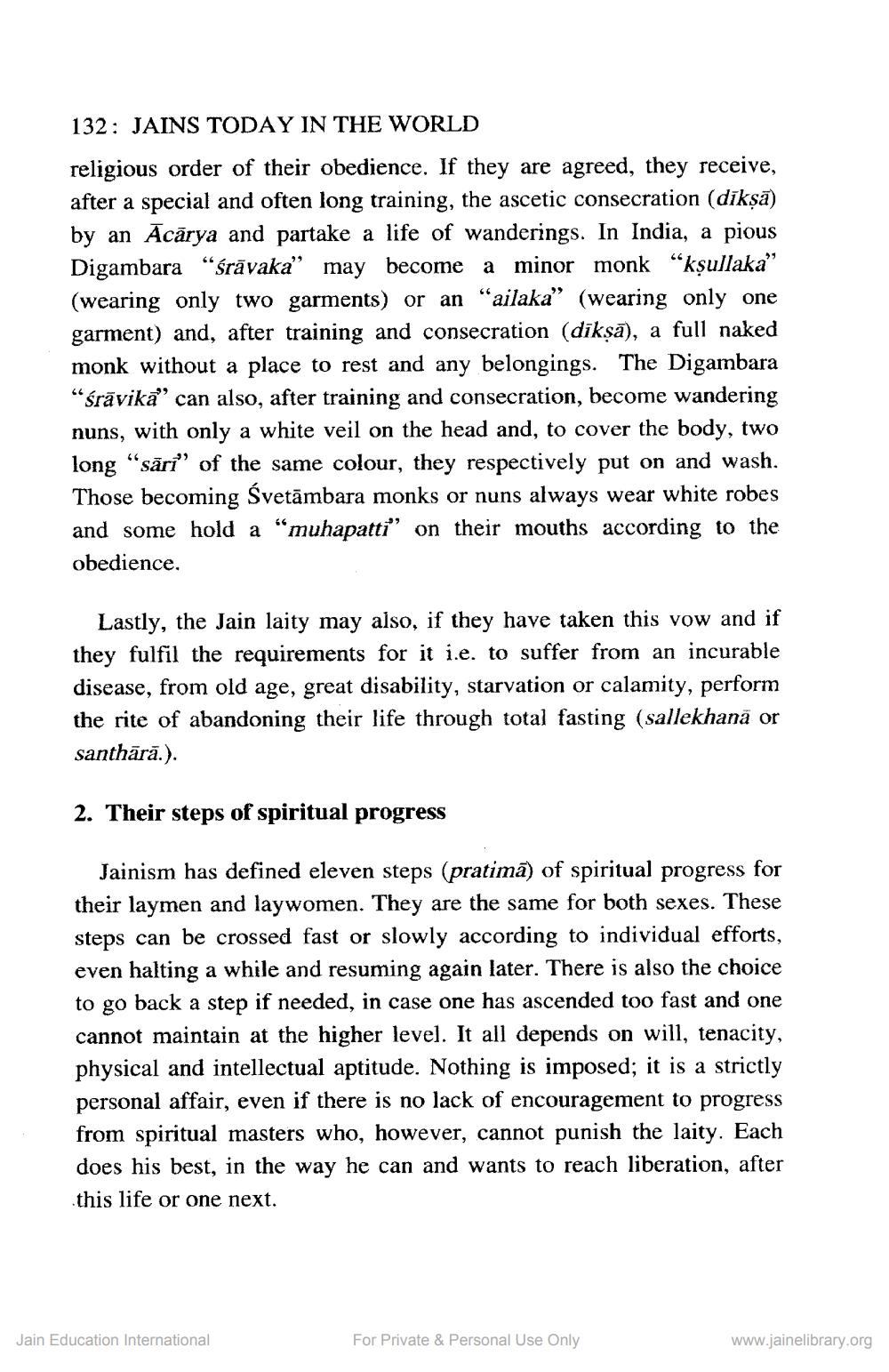________________
132: JAINS TODAY IN THE WORLD
religious order of their obedience. If they are agreed, they receive, after a special and often long training, the ascetic consecration (dikṣā) by an Acārya and partake a life of wanderings. In India, a pious Digambara "śrāvaka” may become a minor monk “kşullaka" (wearing only two garments) or an “ailaka” (wearing only one garment) and, after training and consecration (dikṣā), a full naked monk without a place to rest and any belongings. The Digambara “śrāvika" can also, after training and consecration, become wandering nuns, with only a white veil on the head and, to cover the body, two long “sāri" of the same colour, they respectively put on and wash. Those becoming Svetāmbara monks or nuns always wear white robes and some hold a “muhapatti" on their mouths according to the obedience.
Lastly, the Jain laity may also, if they have taken this vow and if they fulfil the requirements for it i.e. to suffer from an incurable disease, from old age, great disability, starvation or calamity, perform the rite of abandoning their life through total fasting (sallekhanā or santhārā.).
2. Their steps of spiritual progress
Jainism has defined eleven steps (pratimā) of spiritual progress for their laymen and laywomen. They are the same for both sexes. These steps can be crossed fast or slowly according to individual efforts, even halting a while and resuming again later. There is also the choice to go back a step if needed, in case one has ascended too fast and one cannot maintain at the higher level. It all depends on will, tenacity, physical and intellectual aptitude. Nothing is imposed; it is a strictly personal affair, even if there is no lack of encouragement to progress from spiritual masters who, however, cannot punish the laity. Each does his best, in the way he can and wants to reach liberation, after this life or one next.
Jain Education International
For Private & Personal Use Only
www.jainelibrary.org




